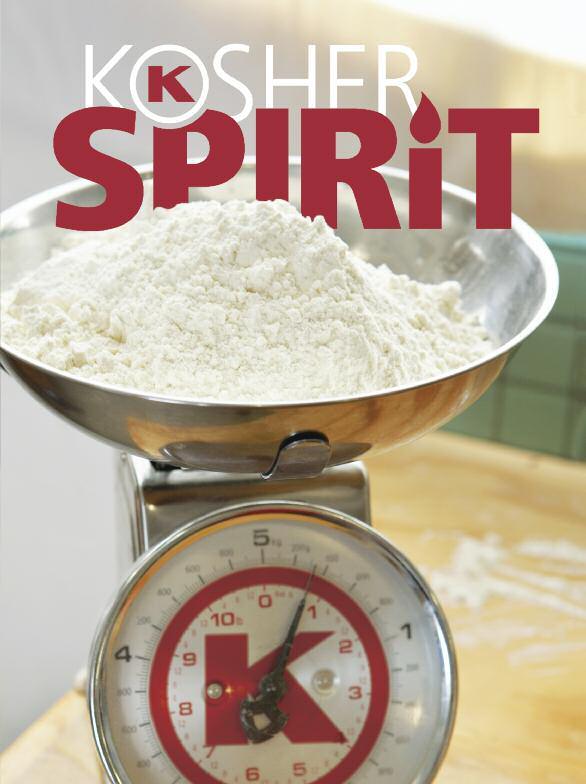
C E R T I F I E D S O U L N U T R I T I O N ה"ב PESACH 5774 ד"עשת חספ
WISH YOU AND YOUR FAMILY A רשכ גח !חמשו
WE
KOSHER SPIRIT Pesach 5774
editOr-in-chieF: Rabbi Chaim Fogelman

editOr: Dovi Scheiner
assOciate editOr: Dina Fraenkel
design: Spotlight Design
dear reader,
we are living in exciting times
Our Sages say, “B’Nissan nig alu u’b’ni ssan a sidim l’higo’el … [In the month of Ni ssan our forefathers were redeemed from Eg ypt , and in Nissan we will once again be redeemed]” (Rosh HaShanah 11a).
When Moshi ach comes the whole world will b e fille d with re veale d holiness ; the world w ill b e a kosher place. Just like we prepare for Shabbos on Erev Shabbos, and e ven taste some of the Shabbos food, today, as we stand at the threshold of Moshiach, it is our responsibility to prepare the world to do all that we can to be ready for that splendid time.
Baruch Hashem, today there are hundreds of thousands kosher pro duct s readily av ailable for anyone who w ant s . With the incre a se of manuf acture d fo o d, an abundance of pro duct s were widely available, and hardworking and dedicated people saw to it that the food would be made kosher Holy seforim are printed in so many lang uages , and are av ailable online and on smar tphones
The past twenty years have seen such a tremendous growth in electronics and mobile access , where vast amounts of products , knowledge and information is available with a click or the touch on a screen Once again, we are faced with the challenge of making it holy and kosher
It is with gratitude to Hashem that the ~ was granted this task by IC ANN (the Internet Corporation for Assigned Names and Numbers) and given the mandate to monitor and administer a whole ne w area of the digital domain, which will soon be known as .Kosher (like .com and .org), where the kosher consumer can be confident that ever y site ending in .Kosher will be kosher without compromise.
B est wishes for a kosher and frielichen Pesach, Rabbi
Chaim Fogelman Editor-in-Chief
We welcome your comments, submissions and letters to the editor Mail: 391 Troy Avenue, Brooklyn, NY 11213 Email: editor@kosherspirit com © 2014 No portion of this publication may be reprinted without written consent from the publisher Scan the QR code with your smar tphone to receive a PDF subscription to Kosher Spirit
10 16 18
SHARE YOUR SPIRIT QUESTIONS FOR THE ~ HEALTHY SPIRIT Organic FOOd Keeping KOsher in KATHMANDU FROM THE DESK OF RABBI DON YOEL LEVY VEGETABLE CHECKING FrOm the ~ Vegetable checKing guide A GUIDE TO TEVILAS KEILIM by rabbi
chanowitz A SLICE OF MEMORIES: bOstOn Fruit slices DID YOU KNOW... riVer Facts PESACH RECIPE gnOcchi with beeF cheeK sauce
BEHIND THE ~ interview with rabbi rapoport CHASSIDIC INSIGHTS PESACH SHEINI
by dina Fraenkel SOUL NUTRITION OOPS! In our last issue we incorrectly listed the location of West India Spice West India Spice is located in Grenada, not Canada
3 4 5 6 8 9
19 20 22 23
Yosef d
WHO’S
compiled
Shar e Your Spirit
readers share their thoughts
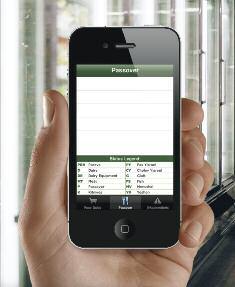
Dear Kosher Spirit,
I re ad your Chanuk ah issue w ith g re at interest I alw ays enjoy Kosher Spirit for its informative articles I especially enjoy reading details on ha shgacha, since my brother in law is a ma shg iach in the food industr y Your articles address some of the intricate issues he deals with
While reading the article Soul Nutrition, I was amazed at the facts presented Howe ver, when reading the closing sentence I w a s appalle d! To w r ite, “So on November 28th , 2013, enjoy your turke y and your latkes,” is , in my opinion an outright offense. The holiday of Thanksgiving is clearly a Christian one. To celebrate it is in the categor y of idolatr y, which is one of the three grave sins a person must give his life for. Rabbi Avigdor Miller Zatz al was known to say that it is an issur d’oraisa to eat turke y on Thanksgiving . Yes , I am aware of how much turke y is sold in the kosher stores this season. But to encourage it? I would expect better editing from such a professional magazine. With much Hatzlacha ,
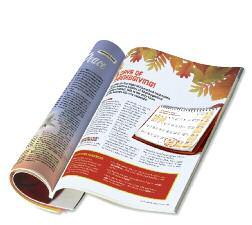
Kosher Spirit responds:
Dear FT


Thank you for your letter. We appreciate the points you brought for ward, but according to other poskim, Thanksgiving is not a religious holiday or one based in avoda zara. Rav Moshe Feinstein zt”l writes (paraphrased), “In regards to joining a Thanksgiving party, since this is not brought down in the non- Je wish writings as a holiday, and it is just a remembrance of those who lived here, there is no issur to make a meal and eat turke y at the meal ” (Ig ros Moshe Y D 4:11:4, see Ig ros Moshe Y.D. 4:12.)
In addition, in a Sicha on 19 Kislev 5747, the Lubavitcher Rebbe ztz”l praises Thanksgiving as the foundation of America , and confirmation that our countr y w a s built on f aith in G-d a s our Cre ator and Dire ctor. The Rebbe conne ct s Chanukah and Thanksgiving , saying that both are days that we commemorate saving the righteous from the hands of e vil and the weak from the strong I am sorr y you took offense, but as you see, there are differing halachic and hashkafic opinions on the issue
B est wishes for a Freilichen Chanukah!
Dear Kosher Spirit,
Thank you so much for taking the time to resp ond to my letter. I must say that you shed light on an issue that has been bugging me for a long time of why so many Yidden are indeed celebrating with eating turkey etc. Once again, I enjoy each one of your Kosher Spirit magazines from cover to cover.
B’Hatzlacha , F T
P.S. The 8 facts on the e ye were amazing! What nifloes haboira! * Letters may be edited for clarity and/or space constraints.
F E E D B A C K
F
T
wnload the FREE Kosher Food Guide app and get the most updated list of the Kosher for Passover products that ~ Kosher certifies
like having a rabbi at your side whenever you go shopping Is it Kosher for Pesach? Visit our updated website: www.OK.org/Pesach IMPORTANT: When buying your wine for Pesach, make sure it has a hechsher Many shmitta wines use the same lable but are not certified. DOWNLOAD THE FREE APP!
It’s
The ~ receives many letters/emails with kosher questions...
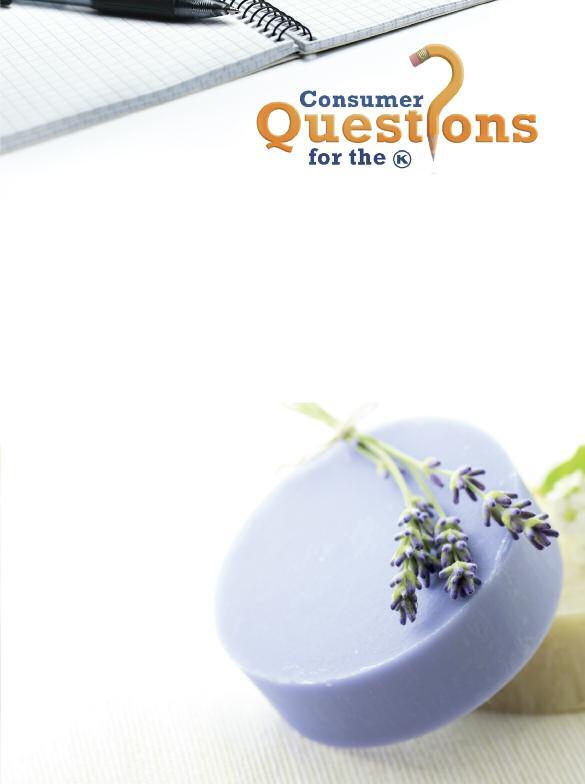
Dear Kosher Spirit,
Is it permissible to use a hand soap that contains milk ingredients (or derivatives) and possible meat ingredients (or derivatives)?
The ~ responds:
Jews are forbidden to benefit or derive pleasure from a cooked mixture of milk and meat in order for the product to be prohibited from being used, the following conditions would need to be met:
1 the fats are from animals that are kosher species of animals
2 the relevant ingredients are cooked together
3 the relevant ingredients are edible when they are cooked together
4 the volume of both the milk and animal ingredients is more than 1 /60 of the total mixture (at the time they are mixed)
the ~ has extensive experience in food chemical production, much of which has crossover applications with the production for soap ingredients based on our experience, it is unlikely that all the required conditions to prohibit the soap would be met therefore, it would be permitted to use this kind of soap One can also choose to be stringent and refrain from using the product until more research can be done on the particular soap
4 www OK org
Organic produce does not have more bugs! e lack of chemical exposure makes organic produce better able to resist insects and disease.
Before World War II all crops were organic .
Washing non-organic food does NOT remove the pesticide used on the produce.
Organic foods are regulated by the USDA .
78% of American families buy some organic food and organic foods account for 4.2% of all food sold in the U.S .




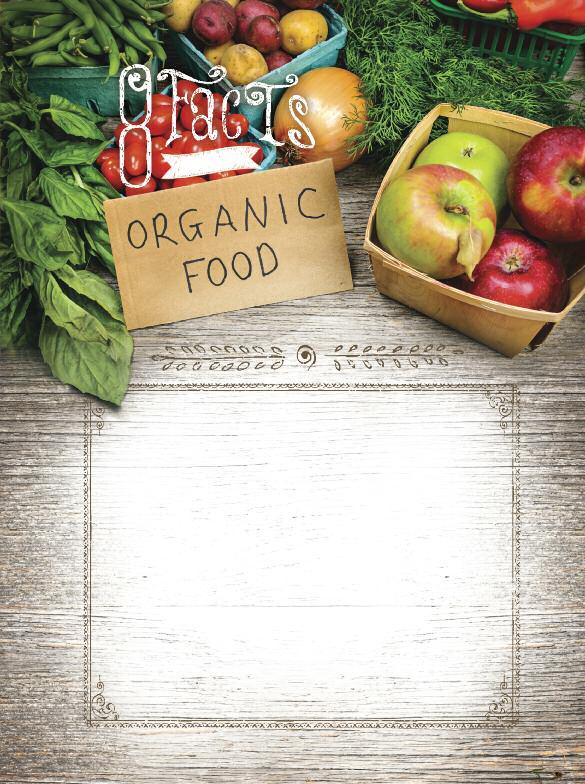
Organic farming replenishes soil and protects water systems from contamination.
Less than 1% of all American crops are organic .
According to the USDA , a product labeled “organic ” only needs to be 95% organic.




www Kosherspirit com 5
about
It’s Erev Pesach, and Jews around the world are hust l i n g a n d b u s t l i n g to p re p a re t h e f i n a l to u c h e s o n t h e i r sedarim . Fro m a r ra n g i n g t h e seder p l ate to peeling potatoes and cracking walnuts, there is much to b e d o n e a n d n eve r e n o u g h t i m e to d o i t . Fo r t h o s e hosting a public seder, the preparation is double or even triple the amount of a regular one. P ublic sedarim are held by the hundreds around the world every year. In recent years, public sedarim have been turned into all i n c l u s i ve Pesach g et aways a n d re s o r t s. T h e d e s t i n ations are endless; from Palm Desert to Cancun to Tuscany, Pesach has become the most exciting of Jewish holidays. But of all the Pesach getaways to choose from, n o n e i s m o re exot i c , o r a s b i g, a s t h e seder h o s te d i n Kathmandu, Nepal.
This famous seder has claimed its title as the largest public seder in the world, hosting well over one thousand p e ople e ver y single ye ar. The seder, hosted by Rabbi and Mrs . Lifshitz , Chabad Shluchim to Kath-
mandu, attracts people from all walks of life, and grows e ver y year. Such an operation takes a lot of effort and creativ ity, esp e cially when it comes to kosher food. Living in a remote location may make kosher resources hard to come by, but it’s far from impossible to put together a beautiful, memorable, and delicious Pesach seder for all to enjoy
The y say it takes a village to raise a child Take that same v illage, move them to Kathmandu, and you have

the te am of workers who br ing this humongous se der to life. When it comes to preparing and exe cuting a se der on such a large sc ale, one c an ne ver have enough help.

Lital, an Israeli who was backpacking through Nepal with a fe w of her f r iends , had ar range d to sp end Pesach in Kathmandu, and ar r ive d at the Chabad House two weeks before Pesach. What she found upon arrival was astonishing; an army of workers , backpackers , and friends working together to br ing this se der to life. “It was like one big , Israeli reunion,” she recalls
Along w ith hundre ds of other Israeli backpackers , a g roup of young students and two couples that the Lifshitz ’ s brought out to Kathmandu, she sp ent two we ek s prepar ing for the seder of a lifetime Kosher food is hard to come by in Nepal, but it’s not imp ossible to find Chabad of Kathmandu has a restaurant , where a major ity of the fo o d for the se der w a s prepared and cooked While some ingredients , such as vegetables , can be found locally, matz ah and wine were ordered from Israel in mass amounts . “ You would not b elie ve how many boxes of matz ah the y had in storage
6 www OK org
B Y L E I G H H E R S H K O V I C H K E E P I N G K O S H E R F O R P E S A C H I N . . .
it w a s unb elie v able!” Chickens , which Rabbi Lifshitz and the team of rabbis shechted themselves , arrived in crates by the hundre ds se veral days before Pesach. Along with local workers whom the Lifshitzs’ hired, it took a team of about fifty people to bring the se der to it s f inal for m. Days of peeling potatoes , boiling carrots and roasting chickens reached a majestic pinnacle on the night of the seder. A young , ne wly mar r ie d couple who went to help conduct the seder w a s sho cke d to f ind just how much
time and ef for t go es into prepar ing such a vast amount of food. “It was an incredible operation,” the y explained.

“

We ar r ive d a we ek b efore Pe sach, and most of the preparations had already b e en taken care of. What was left to do immediately before the holiday b egan was actually co oking the fo o d.” How do es one e ven b e g in cooking food for 1,500 people? The y combine the use of the Chabad House kitchen, as well as the kitchen in the restaurant and the kitchen of the venue the y rented out for the ac-
tual seder. “The venue had a commercial kitchen similar to what you’d find in a hotel massive pots , huge ovens . It cut the cooking time in half.” After cooking for days at a time, executing the actual se der felt like a bre eze. “ There are actually two sedarim held at the venue, ’ the couple explaine d. “ The main seder, which is conducted in Hebre w, is r un by R abbi Lifshitz . There is a second seder, conducted in English, that takes place in the same venue, r ight out side of the ro om where the main seder is conducte d.” While over 1,500 hundre d p e ople to ok part in the seder last year, only 400 of them staye d for the me al “Once we ar r ive d at the me al, we moved e ver yone around so that the y would b e closer to one another, to g ive it a homier fe el The fo o d w a s plated and ser ved by the staff so that we would be free to help conduct and explain the seder ”
The most imp or tant par t w a s making sure that e ver yone felt at home From the massive amounts of food, wine and matz ah to the heartwarming tune of Ma Nishtanah sung by the youngest in the crowd, one thing ’ s for sure: A se der like this is surely an affair to remember.

www Kosherspirit com 7
They say it takes a village to raise a child. Take that same village, move them to Kathmandu, and you have the team of workers who bring this humongous seder to life.
KOSHER
CERTIFICATION



also use d to pro cess fo o ds containing lard, a fat derived from pigs .
in the early 1950s there was a dair y farm across the road from Congregation Sons of Israel in L ake wood This was back when, as my mother says , “L ake wood was a horse and bugg y place”, a resort town filled with hotels primarily occupied from late November until after Pesach.
My father, Rabbi B erel Le v y, OB”M, wasn’t officially involve d in ka shr us yet ; in fact he was the pr incipal at the B etz alel Hebre w Day S cho ol, where I studied as a young boy. Even then, twenty years before entering the world of ka shrus certification, my father would investigate e ver ything we ate to make sure it was 100% kosher.
I rememb er my f ather v isiting the dair y f ar m b efore Pe sach to investigate the entire milking process to make sure it was fully kosher.
To day this sounds obv ious ; howe ver, when I w a s a young b oy the accepte d metho d of a scertaining the ka shrus status of an item was to read it s ing re dient s . If all the ing re dient s sounde d kosher, the item w a s considere d kosher Cer tain ing re dient s may have se eme d inno cent enough, le ading most Yidden to a ssume the item w a s kosher
One such ingredient was vegetable shortening , used to make cookies , cakes and candies My father discovered that often the equipment used to make items containing vegetable shortening was
In the 1960s , my father b egan working in the field of k a shr u s At that time, the accepte d methodolog y in the ka shrus industr y relied heavily on assumption This was ne ver enough for my father His love of truth and thirst for knowledge le d him to b e come an exp er t in chemistr y and fo o d science all to ensure he f ully understo o d the fo o d industr y and how to make sure e ver y food he certified was completely kosher I remember Tom Kallen, the owner of Bakeline in Chicago, mentioning to me how he w ishe d he could get into Rabbi B erel Le v y ’ s head, so impressed was he with his vast knowledge of the world of food processing .
Rabbi B erel Le v y passed away on 5 Nissan, 27 ye ars ago. To day, b e c ause of the foundation he laid, ~ Kosher Cer tific ation remains attune d to the ver y latest in food technolog y and requires of its companies the strictest of kosher standards .

For example, our insistence on a Ma shg i ach Temidi having the only set of ke ys to the kitchen in all meat restaurants and catering facilities , e ven when the owner is a Torah obser vant Jew, is something that my father insisted on thirty years ago. Recent e vents in Flatbush, Monse y and B oro Park have confirmed his wisdom.
His example of seeing the big picture and always thinking ahead, inspired us to acquire the rights to a ne w domain on the inter net c alle d .kosher. Kosher offers ~ Kosher Certification an imp ortant ne w platfor m to e duc ate and promote the mitz vah of ka shrus without compromise globally
It is an exciting time for the worlds of ka shrus and food technolog y and ~ Kosher Certification is proud to stand at the forefront , leading the way, inspired, as always , by Rabbi B erel Le v y, OB”M
Rabbi Don Yoel Levy Kashrus Administrator
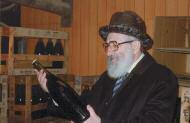
From the Desk of Rabbi Don Yoel Levy HQ: 391 Troy Ave | Brooklyn, NY 11213 | t: 718-756-7500 | f: 718-756-7503 | www ok org
~ 8 www OK org
Rabbi Don Yoel Levy CEO/Kashrus Administrator
Vegetable Checking Tips
Vegetables should be washed with Kosher for Passover soap
Lettuce
The following types of lettuce must be checked according to the instructions below: ARUGULA, BOSTON LETTUCE, ESCAROLE, GREEN LEAF, ICEBERG, ROMAINE, RED LEAF.
1 Separate leaves from the head, opening all folds and creases
2 Soak the lettuce in water with soap for five minutes, and then rub each leaf between your fingers Empty basin by removing lettuce with both hands (holding loosely) in small bunches and shaking them under the water
3 Put lettuce in a clean basin of fresh water Swish vigorously Repeat this step until there is no foam on the surface of the water.
4. Rinse each piece of lettuce, one-by-one, under a strong stream of water


5 Check one-by-one (on both sides) in good lighting A light box or fluorescent light is recommended for this procedure.
Q: Can one check vegetables on Shabbos and avoid the melachos of borer (separating the bad from good), choivel (wounding), mimareich (smoothing)?
Endive
1 Cut off bottoms If outside leaves are not clean, remove them. If top is spoiled, remove it
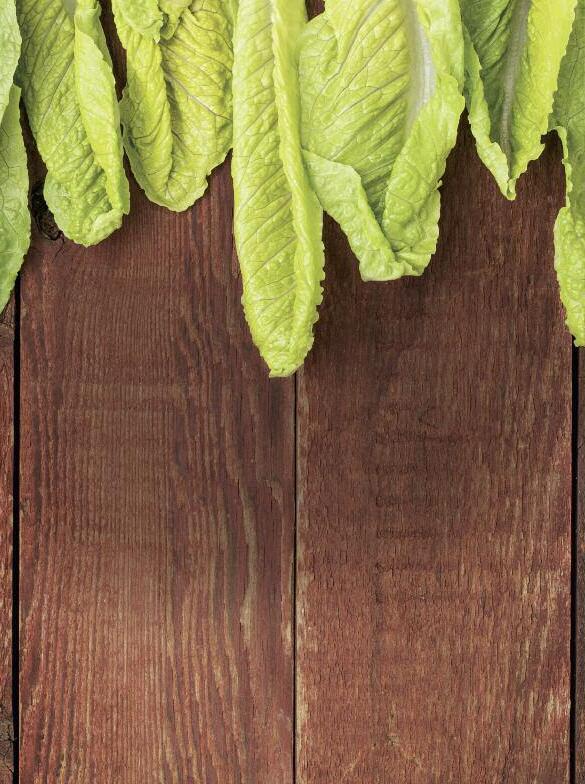
2 Check first 3 leaves from both sides If they are clean, separate the leaves
3 Put in water with soap for 5 minutes, and then swish vigorously for 2 minutes. Empty basin by removing endives with both hands (holding loosely) in small bunches and shaking them under the water.
4. Put endives in a clean basin of fresh water. Rinse each leaf, on both sides, under a strong stream of water Put in a clean basin of fresh water, swishing for at least 2 minutes. Repeat this step until there is no foam on the surface of the water
5 Remove the endives and place on a clean surface. Check at least 3 samples (on both sides) in good lighting A light box or fluorescent light is recommended for this procedure.
A: Yes, if one dilutes the soap and washes the vegetables close to the time the meal will begin, he will then be separating food from non-edibles in close proximity to the meal, which is not a problem Since one is not sure there are insects and one is not sure that the soap will kill the insects, there is no intention (ןווכתמ) to kill the insects so it is not a problem
www Kosherspirit com 9
P R E PA R I N G F O R T H E S E D E R
From the ~ Vegetable Checking Guide Get the full guide FREE at www.ok.org, on your iOS device in the iTunes Store, or for Android in the Google Play Store.
By Rabbi Yosef D. Chanowitz
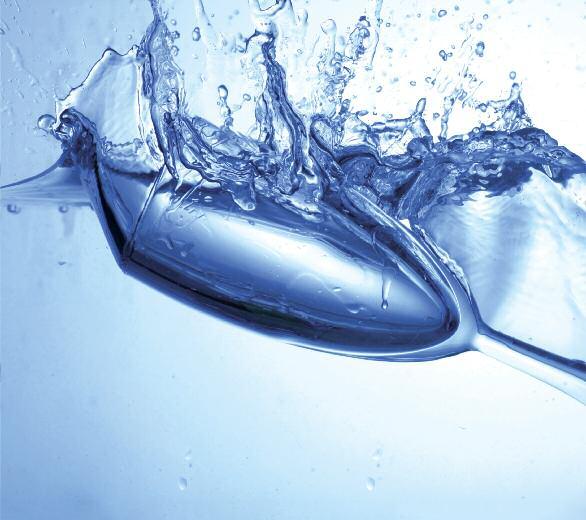
Tevilas Keilim Y


udel and Gittel were married for a couple of years Each year one set of parents would invite them to come for Pesach. Until this year
t h ey a lways a c c e pte d t h e i nv i tat i o n t h ey l ove d s p e n d i n g Pesach w i t h t h e i r exte n d e d families. This year Yudel and Gittel finally decided to make Pesach at their own home. They knew t h at t h e p re p a rat i o n s wo u l d b e d a u nt i n g, b u t t h e thought of hosting their own Sedarim was enough of a motivator. They pictured the sight of their children reciting the Mah Nishtana at their own table and they were inspired to take on the task.
As soon as P urim was over, Yudel learned the laws of Pesach extensively. S o on af ter, he and his w ife Gittel starte d the grueling task of cleaning the entire house room by room Once the y f inally f inishe d cle aning the kitchen, it w a s time for them to k a sher the kitchen and purcha se an entire ne w set of Pesach equipment Yudel consulte d w ith his rov and learned the proper methods of ka sher ing the sink s , counter tops , tables , stove and oven Then, he and his wife went to the store to purchase all the
10 www OK org
A PRACTICAL GUIDE TO
ne cessar y items for their Pe sach kitchen.
On their way out of the store, Gittel turned to Yudel and reminded him that these utensils were not yet kosher to use S ome might re quire toiveling in a mikvah To which Yudel responded, “ You may be correct that
à”ëàî æ”éô (æ-ä”ä ïëå åáúë î”ëä ,ç”áäå íìåà úåèùôî ’ì í”áîøä íù òîùî àåäù ïðáøãî ë”ëå ú”øôä â”äðëäå ùåøéôá éøáã í”áîøä äàøå ç”ãùá íéììë úëøòî ú”éè ììë ’á úåòéãä .äæá ò”åùáå æ”äãà ç”åà ’éñ è”ð÷ à”ëñ ’éñå â”ëù ç”ñ ÷ñôã àåäù ,ú”äî ò”òå ù”å÷ìá ç”éç úåèî .’á
many of these utensils require tevila s keilim, how do we know which ones require tevila?”
The y prepared a list of the equipment that the y purchased and asked their rov a sheilah. The equipment include d: metal p ot s , metal lids , an enamele d c a st iron e gg p ot , Tef lon coate d f r y ing pans , disp osable aluminum sheet pans , P yrex dishes , red staine d china dishes , gla ss cups , metal cutler y, vegetable peelers , a can opener, a wine opener, a nut cracker, a wood cutting board, plastic storage containers , a cr ystal pitcher, a metal knife with wood handle, a netila s yadayim pitcher, a toaster oven, an electr ic fo o d pro cesser, a hot w ater ur n and an electric hand blender
To help them sort through this extensive list of e quipment and determine which items require tevila in a mikvah, we need to take a closer look into the laws of tevila s keilim
INTRODUCTION
The Torah discusses the laws of tevila s keilim in Bamidbar.1 After the Jewish people returned from a battle with the Midyanites, they came back with many possessions that they took from the enemy, including e quipment Ha shem tells Elazar, the son of Aharon the Kohen Gadol, that in addition to pur if y ing and kosher i z ing the e quipment , the Je w ish p e ople must immerse the metal e quipment in the mikvah
“The gold, the silver, the copper, the iron, the tin and the lead, whate ver is used in fire, must be passed through fire by you, and then it will be purif ie d The y must , howe ver, [also] b e cleansed with sprinkling water [alternatively, with mik vah water]. Whate ver (utensils) are not use d in f ire
æ”ò íù àéáî éðä” éìë úéëåëæ ìéàåä éëå åøáúùð ùé ïäì äð÷ú éìëë úåëúî ”åîã

6 ’îâ íù àì“ åðù àìà ïéçå÷ìá äùòîëå ä’éäù ìáà ïéìåàù ”àì
7 úåèéùä åäæù ú”äî é”ùø ,ú”äò ,à”áùøä ó”éøäå ï”áîøä ú”äò à÷ôúñî ,äéì à”áùøä øàáî ïë úèéù í”áîøä ’ìä)
[ but rather, with cold foods], should be passed through [mikvah] water by you [r ight aw ay, since the y do not ne e d to b e purge d].” The Torah includes e quipment that were use d “ w ith f ire” (for hot fo o d) and e quipment use d “ w ithout f ire” (for cold fo o d), a s well a s ne w e quipment –the y all require tevila s keilim.2
From these pe suk im our Chachomim extracte d the follow ing guidelines about tevila s keilim:

1. The equipment must be entirely clean b efore it is immerse d into the mik vah w aters , other w ise the y w ill remain impure 3
2 Only equipment used for a meal re quires te v il a This is similar to kosher ing, which is only done for equipment used with food 4
3 The only materials that require te v il a are those that are made of metal Howe ver, wood, earthenware and stone do not require tevila The Talmud states that glass also requires te v il a s keilim, since it is similar to metal since both can be repaired with the heat of a fire (wood, earthenware and stone cannot).5
4. If the equipment was purchased or gifted from a non- Je w, it requires te v il a. If it w a s just b or rowe d or leased from a non- Je w, or if one purcha se d metal and manuf acture d a utensil himself, it would not re quire tevila . 6
From the source quote d earlier, it app ears that te v il a s keilim is a mitzvah d’orai sa (Biblic al), which is the opinion of many Rishonim. Other Rishonim disagree and are of the opinion that this mitz vah is d’rabbonon (Rabbinical) and the reason for the mitzvah is to add a le vel of kedusha to our equipment by immersing them into a mik vah 7 Some Posk im resolve this disagreement between the above Ris-
êéøö øéùëäì ÷ø éìë åùéîùúù ,ïéîçá ïàëå êéøö ìéáèäì ë”â éìë ùãç àìù ùîúùä íìåòî .5 ÷åñôäî êà“ úà .”áäæä äæå ììåë ’å éâåñ ,ìæøáä,úùçðä,óñëä,áäæä-úåëúî ìéãáä úøôåòäå ùéå íé÷ôúñî íà íåéðéîåìà ììëá .ë”â íìåà úéëåëæ äåä .ïðáøãî ’îâäã

éèåòéîì äãåìç øáãå ,õöåçä ï”áîøäå ãîåì ÷åñôäî åøéáòú“ ”íéîá êéøöù úå÷ðì íãå÷ .4 ’îâ æ”ò óã :ä”ò é”ùøå ,íù ïééòå à”áùøá ä”åú ã”á ã”ù åäæéà“ øáã àáù ùàá êéøöå åøéùëäì ùàá éåä øîåà äæ éìë ”äãåòñ íìåà æ”éà éãë äøùëä øåñéàî øåñéàîã ïéà
ï”áîøäå ãîåì åúåàî ÷åñô ìù íéìë íùéîùúù ïéîçá ”øäèå“ .3 é”ùø ãîåì ÷åñôäî êà“ úà ”áäæä
www Kosherspirit com 11 1
ïééòå é”ùøá ,íù ï”áîø ,íù éùøôîáå é”ùø í”àø) (à”åâå 2 é”ùø ãîåì íéìë íùéîùúù ïðåöá åà íéùãç ÷åñôäî åøéáòú“ ,”íéîá
úåèî à”ìô ÷åñô âë-àë
honim by explaining that the mitz vah of toiveling keilim is d’oraisa (Biblical), howe ver the prohibition of not using them before immersion is d’rabbonon (Rabbinical) 8 Other Poskim disagree and hold that the entire mit z vah is d’oraisa
One may not use a vessel, e ven once, prior to tevila If one accidently use d e quipment which w a s not yet immersed in a mikvah, the food may b e e aten 9 Howe ver, one should remove the fo o d f rom the vessel a s so on a s he re ali zes it w a s not immersed in a mikvah.
e ver, one may be more stringent and toivel without a brocha . 13
LEATHER Does not require tevila
WOOD Does not require tevila
STONE, BONE, HORN & MARBLE
Does not require tevila.
EARTHENWARE, BONE CHINA
Does not require tevila.
PORCELAIN S ome re quire te v il a without a brocha, some do not 14
only coated on the inside, one should toivel w ithout a brocha. If it is only coated on the outside, no tevila is required 16 If a metal or glass utensil is coate d w ith e ar thenw are, Tef lon or enamel, one should toivel w ithout a brocha 17 Metal or gla ss e quipment that was painted still requires te v il a w ith a brocha since paint do es not change the status of the equipment 18
One may not use a vessel, even once, prior to tevila...
S ome Ri shonim say that te v il a s keilim is a Biblic al de cre e that do es not have a re vealed reason (a gezeiras hak a suv). The Yer ushalmi states : “[Te v il a s keilim] is [re quire d] to remove the impur ities of the Ak u ” m and to br ing the item into the holiness of the Je wish people.”10
MATERIALS:
METAL All metals re quire te v il a s keilim with a brocha, including gold, silver, copper, iron, tin and lead.
ALUMINUM Re quires te v il a with a brocha 11
GLASS (including P y rex , D uralex , Corelle, cr ystal and fiberglass) Requires tevila with a brocha . 12
PLASTIC, NYLON, FORMICA, MELAMINE AND RUBBER The custom is not to require tevila, how-

15 íù ’òñ ’å åìéáèîå åìåë úçàë
16 ’îâá æ”ò :äò ïéðòá éìë àéðå÷ åðééäã) ñøç äôåöîä (úëúîá ò”åùáå íù à”ñ à”îøáå ê”ùáå íù øåàéááå à”øâä ,á”÷ñ ïéðòáå äôåöî èøæéåìâá ïåéë áøåòîù
COMBINATIONS Any pie ce of e quipment that includes par t s of metal or gla ss (if the metal or gla ss are essential to the use of this equipment and the y come in contact with the fo o d) do re quire te v il a w ith a brocha O ther w ise, the y do not require tevila 15
GLAZED UTENSILS If the vessel is coate d w ith metal or gla ss , e ven if
÷ñô î”øâä ïééèùðééô óñàîá äøåúì äàøåäå úøáåç ’à ’îò ,11 õéöå øæòéìà æ”ç ’éñ ,æ”ì î”áå á”ç ’éñ .á”ð ùéå íéøáåñù íìéáèäì àìá äëøá ïëå àéáî é”çðîä â”ç ’éñ ,å”ò ïëå ãîìîä ,ìéòåäì ïëå äøåä ù”æø ïé÷øàååã ä”ò à”ãî ÷”÷ã ïåàø÷ ñèééä èùôúðå âäðîä àìù íìéáèäì .14 ú”ô á”÷ñ àéáî ö”éàã äìéáè ïëå ÷ñåô à”éáéä ã”åé á”ç ’éñ ,ç î”øâäå ïééèùðééô óñàîá äøåúì äàøåäå úøáåç ’á ’îò ,20 íìåà ù”äåøòä àéáî ùéù øéîçäì íåùî ùéù íäì íéîòôì èøéæåìâ úéëåëæî ä÷ã ïëìå åâäð ,íìéáèäì ïëå úøâñîá ïçìùä ’éñ
æ”ì à”÷ñ
11 à”é ú”äîù ÷ø ’å éâåñ úåëúî ì”ðä íéáééç ,äìéáèá íåéðéîåìåàå áééç ÷ø ïðáøãî åúåàî äáéñ úéëåëæù áééç øùôàù åëéúäì ïééòå î”âàá ã”åé á”ç ’éñ ãñ÷ ç”åàáå ’éñ çð î”âàä ä”ùäå íé÷ñåô íéëøáîù ìò ,äìéáèä íìåà à”æùø ÷ñåô åìáåèì àìá äëøá ùéå íéøéúî àìá äìéáè 12 äîëá úåîå÷î ñ”ùá à÷ôúñî ä’éì éà úéëåëæ ñøçë (ìåçî) åà úëúîë äùòðù) é”ò .(äëúä ë”ãáå íé÷ñåô .àøîåçì ïàë øéîçî åáéùçäì .úëúîë ’éòå éøéàîá æ”òá íù úáùáå :åè ä”åàå êåøàä ììë çð ’éñ .çð íìåà åøåñéà ÷ø ïðáøãî 13 áåø íé÷ñåôä íéøáåñ ö”éàã ,äìéáè ïëå
USAGE:
Only equipment used for a meal or meal preparation requires tevila with a brocha. These include dishes , cutler y and ser v ing utensils and p ot s , pans and ladles .
Utensils which were not manufactured with the intention to use for a meal, such as a razor knife or scissors , can be used temporarily for foodstuff
ùîúùä íäá ãéæîá ïéà ìëàîä ,øñàð ïåéë ïéà íåù ïéã äòéìá éìëá øñçù .äìéáè àäå êéøöã àéöåäì ìëàîä ,ãéî åðééä ñéðëäùë ,åîöòá íìåà íà åäð÷ úåðçäî àìá äìéáè äñåëîùë ,ïéìëåàá ïéà êéøö àéöåäì ìëàîä ãéî ò”òå øôñá úìéáè íéìë ã”ô è”ñ á”éñå úåøòäáå íù íùá .à”æùø .10 éîìùåøé æ”ò ,íù ù”àøäå à”áùøäå í”áîøäå åáúë àåäù ë”äæâ ù”å÷ìáå ç”éç úåèî ’á øàáî ÷”ë ø”åîãà ùèéååàáåéìî ìëù éìë àåäù úåùøá éøëðä ’éôà éìë ùãç ùé úìåëéá éøëðì ùîúùäì ,øåñéàì úìåëéäå åæä åäùåò éìëë íò úòéìá ,øåñéà êøãäå ãéçéä ÷ìñì øåñéàä àåä é”ò äìéáè ò”òå íù êéà øàáîù äîë úåéâåñ ô”ò ãåñé äæ
íù àéáî äæù åðéà íëñåî ìëá íé÷ñåôä ïëå ùé ÷ééãì ò”åùî æ”äãà ç”åà ’éñ â”ëù ç”ñ ïéàå“ êéøö øîåì éøáãì íéøîåàä úìéáèù íéìë àéä ïî
,äøåúä åäæù ïå÷éú áåùç éøáãì ,”ìëä ïëìå øåñà åìáåèì úáùá ïåéëî ìòù éãé äìéáè åäùåò éìëì éåàøä .ùåîéùì íìåà íâ úèéùì æ”äãà øúåî ãáòéãá øáòùë ùîúùäå ïåéëî ãáòéãáù ùé êåîñì ìò íéøéúîä íéøáåñù ïéãù äìéáè ,ñ”ãî ù”îë íù ç”ñåñ 9 ïééòå î”âàá ã”åé á”ç ’éñ àî ’éôàã íà

12 www OK org
8 úåòåùé á÷òé ã”åé ’éñ ë”÷ ,à”÷ñ é”çðîáå à”ç ’éñ ã”î åàéáî ïëå àáåä øåàéáá äëìä ç”åà ’éñ â”ëù ä”ã ,øúåî øàáîù ïë úèéù é”áä íìåà é”çðîá
åá ìåç éìëë úéëåëæ àéîã ’éòå ú”ëøãá ã”åé íù ç”é÷ñ ,è”éå ò”òå øôñá ë”ìáè à”éô à”î-è”ì÷ñ .17 ïéðòáå ìîàðà ’éò øôñá ë”ìáè à”éô å”÷ñ àéáîù ïë íùá à”æùø ùùåçù àîù éåôéöä ìèá éìëì 18 àúåæçã àîìòá ,àåä ïëå àéáî øôñ ë”ìáè à”ô è”÷ñ íùá à”æùø 19 ú”ëøãá íù ä”î÷ñ àéáî ç”øôäî
without tevila. Similarly a netila s yadayim cup and a dr ying rack can be used occasionally with food without tevila, since it was not created for food use
Even if the utensil w a s manuf acture d for food, if one were to use it only for non-food use, such a s a knife b eing use d a s a b ox cutter, it would not require tevila Howe ver, if one were to use the knife sometimes to cut food as well, it would require tevila without a brocha 19
Tevila is not required for utensils that aid in fo o d pro cessing , yet do not pro duce a f inal pro duct , such a s rolling pins , co okie cutters , coffee grinder, and sifters . Some have the custom to toivel them w ithout a brocha. If the utensil may be used occasionally with finished goods , such as a grinder or scraper, one should toivel w ithout a brocha. Howe ver, a utensil which is normally use d for f inal pro cessing , such as pots , pans , metal grater and glass cutting boards requires tevila with a brocha, e ven if one only plans to use it during the early stages of food production.20
Only utensils that come in dire ct contact w ith fo o d re quire te v il a. This includes barbeque grills , griddles , pot lids , peelers , and the rack s and trays of a toa ster oven Howe ver, if the utensils are not use d dire ctly on the fo o d, such as hoods of barbeque grill, blech, burners , toa ster oven, baking lids and milk pitchers , tevila is not required Some include an egg pot as well 21 According to many Poskim, can openers and cork scre ws do not re quire te v il a Although it sometimes comes in contact with the fo o d, it is not intentional According to some Poskim, nut crackers should be toiveled without
ìù äèéçù ö”éà äìéáè ïåéë íéãéô÷îù àì ùîúùäì íäá øáãì øçà íìåà æ”èä ÷ìåç øáåñå à”îøäù øéîçî íâ íéìæøáá åìáåèì àìá äëøá ô”ò ä”åàä íù æ”ôòå øéîçä ç”øôä (ú”øôäå) ïáäå ùéà éç ñ”úçäå ä”÷ñ ò”òå øôñá ë”ìáè à”ô ,â”ñ à”éôáå ,å”ëñ ,ç”ññ ,á”òñ ,â”öñ ,è”öñ ,ç”é÷ñ æ”ð÷ñ æ”ô÷ñå 21 ò”åùá íù ã”ñ ë”åðáå ’éòå ú”ëøãá é”÷ñ ç”ì÷ñå øôñáå ë”ìáè à”ô æ”÷ñ àéáî íùá à”æùø ìëù åùéîùúù ãéîú úé÷ùá ïåâë ãëá áìç áéùç úé÷ùä ,÷ñôä àìå êøèöî äìéáè íìåà íà åùéîùú éòøà ïåâë
REFERENCE GUIDE Cut
Metal and glass only
• Metal cutlery, pots, pot lids, pans
• Crock-pot (only metal and glass insert)
• Barbeque grill (only the grill itself)
• Rack and trays of a toaster oven
• Sheet pans & baking pans
• Electric Griddle
• Steel knife (even with wooden handle)
• Grater for finished product
• Pizza cutter
• Peeler with metal blade
• Corn on the cob holder
• Ladle, spatula and mixing utensils
• Food processer (at least metal blade and parts)
• Electric water heater (or ask a rov)
• Popcorn maker (or ask a rov)
• Crystal Pitcher
• Glass cutting boards
• Pyrex baking dishes
• Tin or glass salt shaker
• Metal or glass dishes for both storage and serving
* It is preferable to toivel together with a vessel that requires a brocha
• Glazed Porcelain, ceramic and china
• Enameled iron dishes
• Food processor (if used for raw product only)
• Nut crackers (some say with a brocha)
• Tin cans, metal containers for storage
• Glass containers for storage,
• Glass thermos and bottles
No
• All earthenware, stone, wood, leather
• Pottery (unless glazed)
• Wooden cutting board
• Wooden ladle
• Razor knife, pocket knife or scissors (unless used permanently with food)
• Netilas Yadayim cup
• Drying rack
• Milk bag pitcher (common in Israel)
• Can opener and cork screw
• Knife sharpener
éëøöì äãåòñ ò”òå ð”áàá ã”éç ’éñ å÷ ïéðòáå éìë éåàøä äãåòñì íéëìåäù åá øçà ,úåùîúùää ç”øôä øáåñ íéëìåäù øçà áåø åùéîùú ’éôàå íà ùîúùú ïéëñá íéîòôì íéìëåàì åðéà áééç äìéáèá íìåà ú”øôä à”é÷ñ ÷ìåç øáåñå ïéàù íéëìåä øçà áåø åùéîùú ä”ëå à”îøá ,ç”ñ ô”òå à”îøä ùé åìáåèì íìåà,äëøáá ö”áæä ’òñ á”ð ù”äåøòäå ’éñ àî-î åòéøëä åìáåèì íò éìë øçà áééçä äëøáá åà åìáåèì àìá äëøá ë”ëå øôñá ë”ìáè à”ô á”ñ 20 ò”åùá íù ä”ñ éáâì ïéëñ ìù äèéçù ÷ñô à”îøä áåèå“ åìáåèì àìá ,”äëøá éáâìå íéìæøá íéð÷úîù íäá úà úåöîä ÷ñô ö”éàã ,äìéáè òéøëäå ê”ùä éðàùã ïéëñ øùôàù ùîúùäì åá øáã ïëåîä äãåòñì íìåà íéìæøáá åìàë íâå íéèçîá íéøôåúù íäá úà úåôåòä ö”éà äìéáè æ”ôòå áúë øôñá é”øäè ã”åé á”ç óã á÷ åðéîéáù íéðéëñ

• Plastic, nylon, Formica, melamine, rubber
• Disposable aluminum (2nd use)
• Toaster
• Electrical equipment

• Large equipment
• Rolling pins, cookie cutters
• Metal flour sifter
• Egg pot
• Coffee Grinder
• Stove grates, burners, blech
• Ovens (and oven racks unless they come in direct contact with food)
• Electric hot plate (unless food is placed on it directly)
• Induction cooker
• Lid of baking dish and barbeque hood
• Glass microwave tray (unless food is placed on it directly)
• Motor for electrical appliances

ïéðòá éìë åðéàù ãòåéî
øééð íåéðåîåìà åà øééð äåòù íéîòôìù ìæåð åðîî éìëì ïéà øééðä áåùç ÷ñôä áééçå .äìéáè ïéðòáå éìë ìåùéáì íéöéá ’éò øôñá úìéáè íéìë à”éô é”÷ñ íùá à”æùø ùéù åìáåèì àìá äëøá ïåéë íéîòôìù íéàéáî äöéá äîéìù íò äúôéì÷ äãåòñì
• Equipment manufactured and owned by a Jew out and save this sheet for easy reference Toivel with a brocha
is in question
tevila required Toivel without a brocha ✃
Tevila
LAWS & BLESSINGS
How-to Toivel
☛ Before toiveling equipment one must ensure that it is clean from any dirt, rust or company stickers, unless it is a tag that adds value to the equipment (such as a prestigious company, brand or country sticker)
☛ Care must be taken that water reaches all sides of the vessel at once, and that no air is trapped in the vessel.

☛ Only a mikvah which is kosher for tevilas nashim or a designated keilim mikvah may be used for utensils
Before immersion one holds the vessel and says the following blessing: For one vessel the brocha is:

a brocha, while some re quire toiveling w ith a brocha . 22 Sheet pans and baking pans require tevila, although the y are only used with a liner or foil
Equipment which is used to store food, such as cans , containers , thermos , and glass bottles require tevila without a brocha If it occasionally is used for ser ving as well, like a pitcher, one should say a brocha 23
When purchasing a vessel
Disp osable aluminum pans do not re quire te v il a since the y are not considere d keilim. Even if one were to use it a fe w times , it is still not a permanent keili since it was designed for one- time use and is not durable. S ome are more stringent and toivel the pans if the y will be used more than once, especially if the aluminum is made of thicker, less f limsy material.24
Large equipment maybe harder to toivel, but is not exempt from tevila altogether. There are instances in hal acha when some large e quipment could b e sold to a non- Je w who would then allow the Je w to borrow it for use. Usually, this is considere d a loophole, but in some instances , such as a ver y large utensil, it may be allowed.25 An oven built into the ground is not a keili, so no tevila is necessar y. Similarly large equipment which is not moveable, such as large ovens and fr yers , do not re quire d te v il a The same applies to utensils de dic ate d for this equipment
Electrical equipment that comes into direct contact with food requires tevila – for example, if one ha s an ele ctr ic w ater ur n, ele ctr ic hot plate or popcorn maker, one needs to toivel at least the parts (if they come apart) of the equipment that touches the food The wire does not
☛ One then proceeds to dip the vessel once in the mikva water There are different minhagim regarding the number of times the vessel should be immersed Consult your rabbi if you do not know your family minhag
ùéå íéöåøù øéîçäì íà ùîúùî åá øúåé íòôî úçà 25 à”éå àåäã ïéãä éìëá ìåãâ ’îî äàñ åðééäã äîà ìò äîà íåøá ’â úåîà äáåâ øåòéùå) äæ úåãéîá åðìù éåðù ú÷åìçîá ïéá ç”øâä äàð à”åæçäå ,(î”ëàå ’éòå æ”ëá ú”ëøãá íù ä”÷ñ øôñáå ë”ìáè à”ô é”ñ ã”åèåèäã éàúéìú á”ç ’éñ á”ë øéúî éìëá ÷éæçîä ’î äàñ åðéàù áåùç ,éìë à”òøå íùá â”äðëä à”ðéááå øòù ä”åà ’éñ åñ ÷ìåçù æ”ò à”ðéáäå äîëå íé÷ñåô íéùôçî íéøéúä ãîìì úåëæ äîì íìåòä àì åâäð ìåáèì íéìë íéìåãâ øôñá éìåãéâ äøäè ’éñ æ”é àéáî øéúäì éìë òåá÷ .ò÷ø÷á
.22 øôñá ë”ìáè à”éô ã”ë÷ñ å-ä”÷÷ñå àéáî à”æùøî éåìúù íà íéàéáî åîë àåäù íò íúôéì÷ ïçìùì íìéáèî ,äëøáá íàå åàì àìá .äëøá
.23 ú”ëøãá å”÷ñ øôñáå ë”ìáè à”ô ç”ñ à”éôå æ”èñ â”é÷ñå ô”ò .à”æùø íìåà ’ø äùî ïàîéðééä øéúî úéëåëæ àìá .äìéáè

ïéðòáå úåøéâî øø÷îä ìëåàäù íéîòôì òâåð íäá î”îå åâäð àìù ’éò,íìéáèäì úìéáèä íéìë à”éô ç”÷ñ øàéáù à”æùø åîëù øø÷îäù åîöò åðéà áåùç ,éìë êë úåøéâîä íéìèá äéìà 24 ú”åùá é”çðî ä”ç ’éñ áì úåà à é”÷ìçáå â”ç ’éñ åè÷ øéúî éìë åùåîéùù åá ãç éîòô ô”îøâäå óñàîá äøåúì äàøåäå úøáåç ’á ’îò 40 øéúî ùîúùäì åá äîë ,íéîòô äæù àì äùåò úà éìëä éìëì òåá÷


14 www OK org
’éòå äëåøàá øôñá ë”ìáè à”ô æ”è÷ñ ïéðòáå éôãî øø÷î ’éò ë”ìáèá à”éô ,é”ñ ïéðòáå ãåã íéî íéîç íù ,å”ìñ ïéðòáå ïçìù úëúîî íù á”øñ
Ub ¨ J § Se r J £ t 'oŠI¨ Q†n UbeO¡t ¨ Tt QUrŠC /o Ub œ U m ± u 'u¨Im¦nC / /// ¨ Tt QUrŠC
ne e d to b e toivele d. (S ome posk im hold that the wire should be toiveled.)
It is preferable to wait a few days until the appliance is completely dr y after it was toiveled before using If one is concerned that it may get ruined, one should discuss this matter w ith a rov 26 Some say that a toa ster oven does not require tevila since it is used for bread which is e dible b efore enter ing the toa ster, but most Posk im disagree.27
Equipment that can b e disassembled does not need to be taken apart before tevila. It can be toiveled either whole or apart, but a closed Thermos (or other item with a lid) needs to be opened before tevila.
OWNERSHIP:
The mitz v ah of te v il a s keilim applies to the equipment that was previously owned by a non- Je w, or e ven by a partnership between a Je w and a non- Je w Even if a Je w built the equipment , tevila is required if it belonged to a non- Je w.28 Yet when one sells chometz to a non- Je w before Pesach through his rav, one is not require d to toivel the vessels af ter Pesach.
In the Diaspora, most manufacturing companies are ow ne d by nonJe ws , or have a non- Je w as a partner. Therefore, if one is unsure about the ownership of a company, it must b e a ssume d to b e ow ne d by a non- Je w and te v il a w ith a brocha is re quire d. In Israel, it is assumed that the owner
of the manuf actur ing company is Je wish, and no tevila is required unless one finds out that the company is owned by a non- Je w 29 Some Poskim are of the opinion that in the USA one should not re cite a brocha on tevilas keilim unless one knows definitively that the item b elonge d to a non- Je w Most poskim disagree, and hold that one should make a brocha unless he knows that it w a s ne ver owned by a non- Je w. When purchasing a vessel one should tr y to find out if it e ver belonged to a non- Je w.
Are the y stationar y or conne cte d to the ground?
Do the y come into contact w ith the food directly?
At which stage in the pro duction pro cess do the y come into contact with the food?
one should try to find out if it ever belonged to a non-Jew...
If one sends equipment to a nonJe w ish handy man to repair, it do es not re quire te v il a once the e quipment is returne d,30 unless the metal used for repair belonged to the nonJe w and the e quipment could not f unction w ithout the repair. Therefore, if one were to send a knife to a non- Je w ish shar p ener, the ne wly shar p ene d knife would not re quire te v il a. The same would apply if one sent sheet pans to be reglazed.
INDUSTRIAL:
When dealing with industrial facilities and the industr ial si ze e quipment , there are a numb er of factors to consider when a Rov Hamachshir deter mines if te v il a s keilim is required:
How large are the keilim?
What materials are the y made from?
Are the y electrical?
ô”äëìå íìáèé àìá äëøá ë”ëå ú”åùá à”éáé
,éøëðì ë”çàå åäðå÷ äøæç øçà çñôä íâäå
There is an additional f actor to consider : are these utensils solely use d for business pur p oses and not for personal use? Some Poskim are of the opinion that the food produced in industrial manufacturing plants is not for p ersonal use, only for business purposes , so the equipment used are not c alle d “Keili S eud ah” and do es not require tevila.
There is much debate about when this can be applied.31 A rele vant practical application of this question is as follows : If one were to purcha se a candy dish made from metal or glass f rom a store w ith a ha shgocha, one should find out if the ha shgocha require d the store to toivel the dishes b efore selling them and if the store owner actually toivels them
If not , one c an still purcha se the candy dish and use it until the candy is f inishe d At that p oint , one is require d to toivel the dish b efore it is reused
Unfor tunately this ar ticle c annot cover all the intricate details relate d to the hal achos of Te v il a s Keilim There are of ten differences of opinions in some scenar ios . When in doubt one should consult with a rabbinic authority.
úåëúî êøáì èøôáå éìëá àáåéîù ,ïéñî ïôé ’éôàå ,ôàøåéî íìåà éìëá úéëåëæ ããöî ,ì÷äì
ö”éàù øåëîì éìëä åîöò ÷ø êéøö øéëùäì ,åîå÷î íìåà äáøäá éøèù äøéëî ïëå àåä øèùá ï÷éúù æ”äãà ìòá àéðúä ììëù ïëå“ íéìë íéöåîç ùéù íäéìò õîç ”ïéòá øàéáå äæá ÷”ë ø”åîãà ùèéååàáåéìî éèå÷ìá úåçéù î”åèî å”ìùú ïéàù áåéç äìéáè ïôåàá ïéàù çéëù éøëðäù ùîúùé íéìëá åìà ïåéëî äìéáèù äåä íåùî úàîåè í”åëò ë”éà áåéç ,äìéáè ù”òå úåëéøàá
27 õáå÷á óñàî ä”ååúì úøáåç ’à ’îò 11 ïã ô”îøâä úìéáèá éìë ìëåàäùë éåàø äìéëàì àìá éìë ,äæ ÷éñîå áééçã éìëá úåëúî åîë) éìë ,(øöåà íå÷îáå ùùç ìå÷ìé÷ ùé .øéúäì ú”åùáå î”á ã”ç ’éñ ’÷ ÷ñô êéøöã äìéáè

28 ò”åù íù à”ñ ïëìå øëåîä åéìë éøëðì äðå÷äå íúåà äøæçá áééç ,äìéáè ë”àå äù÷ êéà ììë ìàøùé íéøëåî íöîç ìë äðù
à”éô à”ðñ äîëá úåöò êéà ï÷úì éìë éìîùç äìéáèì ïéðòáå èåç éìîùç î”øâàä ã”åé à”ç ’éñ æ”ð ìé÷î àì åìáåèì é”çðîäå íù øéîçî åìáåèì ë”â
www Kosherspirit com 15 26 ú÷ìçä á÷òé ìé÷î ,ìîùçá ïåéëî à”àù ùîúùäì éìá åúñðëä ,ò÷ùì äåä åîë øáåçî ò÷ø÷ì àìå áåùç .éìë áåøå íé÷ñåôä àì éøáñ åäåîë ’éòå ä”ùá ã”åé ’éñ æ”ð é”çðîáå á”ç á”òñ î”âàáå ã”åé à”ç ’éñ æ”ð ’éòå äëåøàá øôñá ë”ìáè
êéà øàéáù äæá äîë úåéâåñ ùéå íéøéîçî àì øåëîì íéìë .íîöò 29 ì”åçáã àì ïðéøîà ÷ôñ úåëøá ì÷äì ë”àà äåä ÷ôñ ìå÷ùä àìå ,áåø æàù äåä éàãåë íéøëð àìå ïðéøîà ìë òåá÷ äöçîë ìò äöçî ã”åãéðá ’éòå î”âàá ã”åé á”ç î”éñåñ ç”åàáå â”ç ’îò âù éáâì éìë
é”ç ã”åéç ’éñ áé ÷ñô êøáì íâ .úéëåëæá ’éòå äæá ë”ìáèá á”ô å”÷ñ úåèéùä êøáì àìå êøáì ò”òå úåøòäá íéøåàéáå éìäà äøåú õáå÷ 999 áøäî ì é ïé÷ñø äæá .30 ç”éå ïîåàã äðå÷ çáùá éìë 31 ãñåéî ô”ò úáåùú èáùä øôåñ äáåùú æ”ñ
A Slice of Memories Boston Fruit Slices
It is synonymous with Passover treats, an i c o n i c Jew i s h d e s s e r t k n ow n to a l l — chewy, colorful, candy fruit slices. For over s eve nty ye a r s, B o s to n Fr u i t S l i c e s h a s p rod u c e d t h e swe et t re at . Ye a r s a g o, Pa s s ove r treats were rare and we did not have the sophisticated kosher for Passover treats that you can find in the stores today.
B oston Fruit Slices is a small company, w ith a fe w dozen employe es , founded by Vincent Aliberti Aliberti bought the fruit slice line from H W Powers C andy Co , another B oston company, in 1984 Powers Candy was the f irst company to pro duce f r uit slices in the United States Although ow nership ha s change d tw ice since
then, B oston Fruit Slices has kept the same re cip e for thre e de cades Current ow ners , John Mor r isse y, and Rick Hiera work together to bring the delectable treat to homes nationwide
While there are comp etitors , B oston Fruit Slices is the best known brand Dif ferent v ar ieties include mini slices , chocolate-covered slices ,
and unique f lavors . B oston Fr uit Slices’ pro duct is sup er ior to other brands for se veral different reasons : the fruit-juice f lavor, the gelling agent (agar as opposed to pectin), and the egg-white f luff for the fruit slice rind. The slices are tossed in piles of sugar and packaged in a rainbow pattern in e ver y box .
B oston Fr uit Slices is insp e cte d ye ar round by lo c al, B oston-bre d, ma shg i ach, R abbi Yaakov Blotner, who enjoys a warm relationship with the company “Located just down the street from where I was born, B oston Fruit Slices provides a kind of homecoming exp er ience for me D ur ing my many years of super vision there, I have found the management fo -
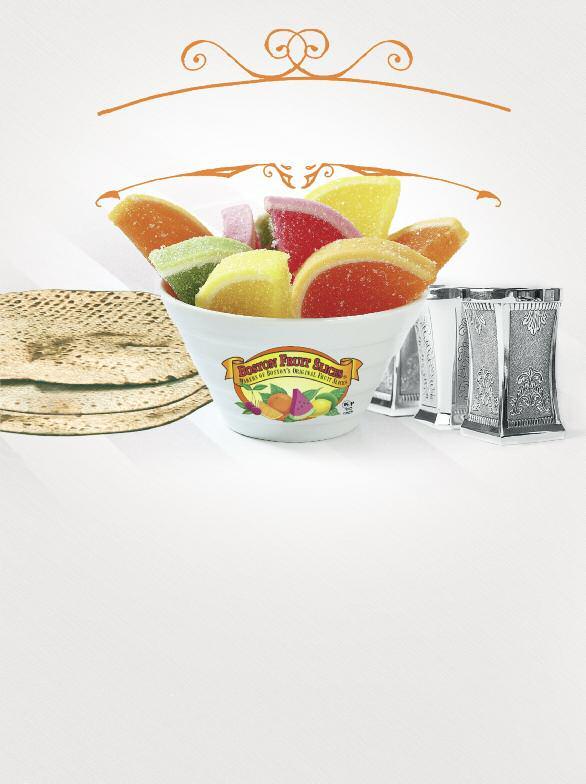
16 www OK org
cuse d on ka shrus concerns with the

p y p y this since the sugars tend to stick to the machines . Once I was doing my
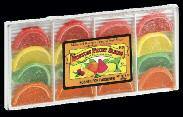
final inspections right before closing unique production process . First the sugar and gelling mi xture is b oile d
and imme diately co ole d. Next , the j y y
Passover with the confidence that they are kosher without compromise.
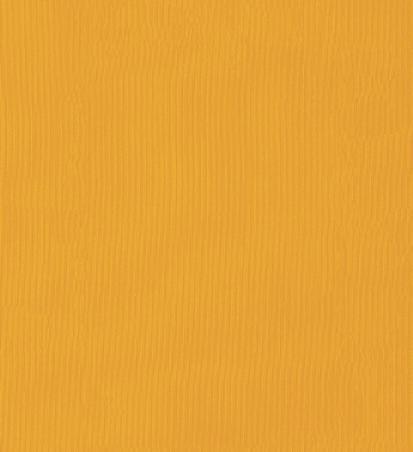
www Kosherspirit com 17
“Boston Fruit Slices is committed to selling kosher candies, especially during Passover. Our fruit slices are a traditional item during Passover going back nearly 60 years...”
DID

YOU KNOW...
As part of the Exodus from Egypt B’nei Yisroel walked through the sea to safety. Here are some facts about the earth’s bodies of water…
• The longest river on our planet is the Nile it flows through 11 countries, beginning in Lake Victoria and winding about 4,160 miles until it empties.
• The Amazon River is shorter than the Nile but is known as the largest because it carries the most water.
• Some say the Roe River, near Great Falls, Montana, is the shortest river in the world (200 feet). Others say it’s the D River in Oregon, which is sometimes only 120 feet long depending on the tide
• Angel Falls in Venezuela (pictured) is the tallest waterfall, with a height of 3,200 feet.

• The deepest part of the world’s oceans is the Mariana Trench, located in the Pacific Ocean, which reaches a maximum known depth of 6.8 miles.
• The Pacific Ocean is the largest body of water, covering 1 /3 of our planet.
• The Yam HaMelach is the lowest and saltiest body of water at 1,340 feet below sea level.

Gnocchi with Beef Cheek Sauce
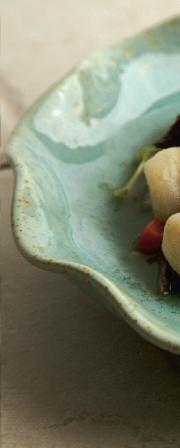
Gnocchi is a light, versatile, potatobased pasta or dumpling Attempts to make it kosher for Passover proved challenging because simply substituting potato starch for the flour resulted in a gummy texture The trick to achieving a light kosher for Passover gnocchi is decreasing the amount of potato starch and beating the egg white until frothy
There are two types of gnocchi: one that is dough-like and can be rolled out like pasta, and one that is more delicate and is portioned out using a piping bag
A potato ricer is an inexpensive kitchen tool that ‘mashes’ the potato while keeping it fluffy and starchy
Recipe submitted by Joy of Kosher Magazine Subscribe or Give the Gift of Joy of Kosher at www joyofkosher com /subscribe Download their new iPad app on the App Store
River Facts 18 www OK org
Tip: It is important to rice the potatoes and make the gnocchi while the potatoes are still hot
2-3 large russet potatoes
1 egg white
PESACH RECIPE
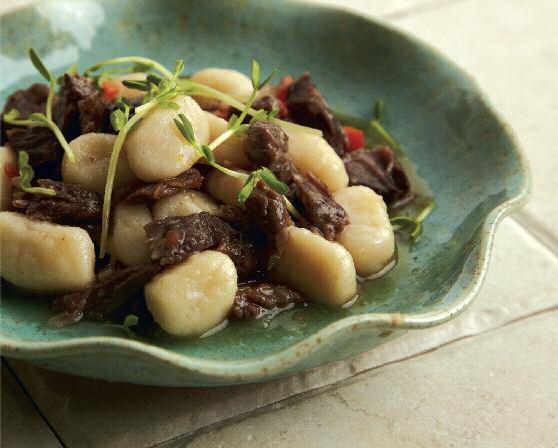
6-8 tablespoons potato starch
Preheat oven to 375°F Pierce the potatoes all over with a fork . Place potatoes on baking sheet and bake uncovered for about 45-60 minutes , until potato is fully baked Using an immersion blender, regular blender or standing mixer, beat egg white until it quadruples in size and becomes white and frothy Set aside
While still hot , peel potato and mash using a potato ricer or masher Add the potato starch to the potatoes and mix until combined Add the egg whites and mix until just combined Divide ‘dough’ into two; roll out and slice into 1½ inch pieces . Bring a large pot of water to a boil and cook gnocchi until the y float to the top Remove from boiling water and add to desired sauce.
1 pound beef cheek
2 tablespoons olive oil

1 Spanish onion, finely chopped
1 large carrot, finely chopped
2 celery ribs, finely chopped
2 cloves garlic, minced
1 large tomato (about 1 cup chopped)
½ cup good-quality red wine
1½ - 2 cups chicken stock
Note: You can omit the garlic if you do not use garlic on Pesach
In a medium saucepan (3 or 4 quart), heat oil on medium-high heat Once oil is hot , add meat and cook for about three minutes per side or until meat de velops a brown sear. Remove meat from pan and lower heat to low-medium
Add onions and cook for ten minutes , until onions are translucent Add the carrots , celer y, and garlic and cook for another ten minutes Add the tomatoes and cook for five minutes . Add the ½ cup of wine, raise heat and simmer for five minutes Add the reser ved beef cheek meat and enough chicken stock to just about cover the meat . Lower heat to the lowest possible, and cover pot . Cook for 2 hours until beef cheek is tender Let sauce cool Remove beef cheek and shred the meat
When ready to ser ve, heat a fr ying pan on medium heat and add 1 tablespoon oil Add the shredded meat and cook for three minutes until meat gets golden brown. Pour reser ved sauce and cook for two minutes Add the gnocchi and cook for three minutes on medium heat
Ser ve immediately
www Kosherspirit com 19
Basic Potato Gnocchi: Beef Cheek Sauce:
whO’s behind the ~
Interview with Rabbi Avraham Rapoport

KS: Where did you grow up? Where did you go to yeshiva?
R AR: I was born in Liverpool, England, and gre w up in the G eula neighborhood in Yerushalayim I went to the Knesset Hizkiyahu Yeshiva and later to Ateret Yisrael
KS: What did you do after yeshiva?
R AR: I got married and then learned in kollel for a fe w years , and then went on to work as a tutor and mentor in Netiv a HaTorah Yeshiv a . L ater I b e c ame a mag g id shiur in Le v Ar ye yeshiva in Jerusalem.
KS: What is your current position at the ~?
R AR: I head the ~ India department and I am also in charge of ne w accounts for ~ Israel.
KS: What prepared you the most for your current position at the ~?
R AR: Since my marriage, e ven while working in other fields , I worked from time to time as a mashg iach for various Israeli kosher agencies Of course, I starte d by super vising simple productions , which didn’t require much experience With time, I learned a lot , accumulated experience, and starte d dealing with more complex proje ct s L ater, I star te d going to v isit pro duction sites abroad When I began working for the ~ I was already an experienced ma shg iach, with good knowledge of the kosher food industr y.
KS: What is best thing about working at the ~?
R AR: The ~ is an organi z ation that te aches you ever y day that size doesn’t have to come at the expense of quality Rabbi Le v y keeps our standards high; we always mar vel at how easy it is for him to give up a project or a plant because the y can’t quite measure up to his kosher expectations . His committed leadership, his v a st exp erience, and, of course, his siyata d’shmaya, makes the ~ such a respected ka shrus agenc y.
The best thing about working in the Israeli office is working under Rabbi Aharon Haskel, who somehow manages to let the rabbinic coordinators run their departments independently, while still staying involved and aw are of e ver y detail. He is like the angel who commands the plant to grow, and we constantly take advantage of the way he makes himself and his knowle dge av ailable to us when we ne e d adv ice and guidance.
KS: How would you describe the ~ today?


R AR: The ~ is probably the most te chnolog ic ally advanced kosher agenc y in the world, something that affects both the kashrus level and the customer ser vice le vel We are definitely the biggest mehadr in kosher agenc y in the world, and we are here so more Je ws will have access to more food which is strictly kosher

~
M E E T O U R S T A F F :
BEHIND
20 www OK org
Rabbi Avraham Rapoport
– Rabbi Don

“
What Other People Say About Rabbi Avraham Rapoport
“C

KS: Can you share an interesting experience that you had while working at the ~?
R AR: One of the hardest things to explain to factories is the issue of “bli a ’ a bekelim” – why e quipment might be non-kosher e ven after cleaning . When I first came to India, one of the factories invited me for lunch with the senior staff and the owners . I started explaining that unfortunately I wouldn’t be able to eat the food ser ve d, but I would b e happy to sit down with them and e at my ow n fo o d. The ow ner couldn’t ag re e; he told me that the y belong to a religion which demands a vegetarian diet, so actually all the food is kosher. I explaine d that “kosher ” is a more complex description than “ ve getar ian” I of fere d him a pie ce of a c ake I brought along and he refused outright , explaining that he must not eat things without being certain about the ingredients Of course that was all I needed to explain that it is best if e ver yone keeps to their own food
We had a ver y interesting conversation over that meal, and it turne d out that their relig ion also ha s a “blia’a bekelim” prohibition – a dish in which meat was co oke d, for example, is forbidden for use – fore ver Since then, I use this stor y often when visiting plants in India , and I find it ver y effe ctive in clarif y ing this kosher issue.
ombining the energy of youth and the meticulousness of a well-seasoned rabbinic coordinator, avi, as he is fondly called, excels in his endeavors to literally bring kashrus worldwide his enthusiasm and Ahavas Yisroel give away his chabad ancestry rabbi rapoport works exactly according to ~ guidelines, which ensures his success in his quest to spread kashrus we are fortunate to have avi with us as the ~ and it would not be the same without him ”
Rabbi Don Yoel Levy
Kashrus
Administrator
“Rabbi rapoport is a rare combination of a talmid chacham, an exemplary mentsch, and a highly intelligent professional with profound knowledge of the food industry we are very proud to have a man of his level at the ~ his dedication to kosher work is absolute: he works closely with people in very different time zones – india and the us for instance – so for him this is really a 24/6 job i always get enthusiastic feedback about rabbi rapoport – not only from our clients but even from other kosher agencies, which hold him in a very high esteem ”
Rabbi Aharon Haskel Director of ~ Israel
“
“Avi, as he is fondly called, excels in his endeavors to literally bring kashrus worldwide. ”
Yoel Levy
www Kosherspirit com 21
Kashrus Administrator
Pesach Sheini
 Compiled by Dina Fraenkel
Compiled by Dina Fraenkel
always awaiting Moshiach’ s arrival and the rebuilding of the Beis HaMikda sh If the Beis HaMikdash is rebuilt during the time b etwe en Pe sach and Pe sach Sheini, we w ill have to br ing the Pesach of fer ing on Pe sach Sheini 6 The mitzvah of awaiting Moshiach’ s arrival obligates all of us to prepare for Pesach Sheini immediately after Pesach
“ There were some men who were ritually unclean from contact with the dead, and were unable to prepare the Pesach offering on that day ; and the y came before Moshe and Aharon that same day Those men said to him: ‘ We are ritually unclean from contact with the dead Why should we be deprived of bringing the offering of Ha shem at it s app ointe d time among the Children of Israel?’ Moshe said to them: ‘Stand by, and I will hear what Hashem w ill command concer ning you ’ G-d spoke to Moshe ‘If any person of you or your future generations shall be ritually uncle an f rom contact w ith the de ad, or b e on a distant jour ne y, he shall still make the Pa ssover-offering to the L -rd. He shall make it on the 14th day of the second month [Iyar]…’”1
As the Pre vious Lubavitcher Rebbe, Rabbi Yosef Yitzchak Schneersohn, explaine d, “ The idea of Pe sach Sheni is that nothing is irretrievable; we can alw ays re ctif y our b ehav ior. Even one who was ritually unclean or who was on a distant journe y – e ven willingly –c an still rehabilitate himself.”2 The R ambam w rites that e ven a Je w who intentionally (i.e. w a s tahor and not
on a journe y) failed to offer the Pesach sacrifice and w a s subje ct to the punishment of kareis (spiritual excision of the soul) did te shuva and offere d the sacrifice on Pesach Sheini he would be forgiven 3 This is the power of Pesach Sheini
Although we no longer have the Beis HaMikdash in our midst, the concept of Pesach Sheini applies to all Jews in all times and we obser ve it by eating a kez ayis of matz ah on Pesach Sheini
A Je w, who is f ar f rom Torah and mit z vos, e ven if he ha s intentionally straye d from the path of his parent s , can always return to Ha shem and to his real essence.4 No omission in one ’ s ser vice to Hashem cannot be rectified; no sin c annot b e rep ente d. A Je w ish neshama remains a cheilek Eloka mi’ma ’al mama sh (an actual spark of Ha shem), no matter how f ar it f alls from Torah obser vance.5
For a Je w who obser ve d Pe sach prop erly the first time, Pe sach Sheini se ems unne cessar y. Why do es a Je w who brought the Pesach offering need to mark Pesach Sheini? B’nei Yisroel is
This is a parallel for our p ersonal Div ine ser v ice Ha shem commanded: “They shall make a Sanctuar y for Me and I w ill dwell w ithin them [w ithin e ach and e ver y Je w7].”8 The cheilik Eloka mi’ma’al inside e ver y Je w c an ne ver b e destroye d and to day, when the Beis HaMikda sh is unfortunately not in our midst , we still p erfor m all of the proscr ib e d r ituals through our tefillah and obser vance of mit z vos. Just a s some men were not able to make the Pe sach of fer ing on the 14th of Nissan, sometimes each of us fails to perform a mitz vah or ser ve Ha shem to the b est of our ability, either intentionally or accidentally. Just as Hashem is infinite and without constraint , so is the Div ine ser v ice of a Je w. We c an alw ays re ach a higher le vel; there are alw ays ne w le vels of ser vice that we can strive for Therefore, Pe sach Sheini is applic able to e ver y Je w, e ver y day, e ver y year There is always a need, and an opportunity, for a se cond chance in our Div ine ser vice, either to rectif y an omission,
22 www OK org CHASSIDIC INSIGHTS
Pesach Sheini represents the second chance, available to every Jew, to reach one’s spirit u a l g o a l s. T h e ye a r a f te r t h e E xo d u s f ro m Egypt, the Jewish people were commanded to b r i n g a Pe s a c h o f f e r i n g o n t h e 14 t h o f Ni s s a n . T h e s a c r i f i c e wa s i n c u m b e nt o n eve r y m a l e , but some were not ritually pure and, therefore, were unable to bring the sacrifice.
or to increase the le vel of our ser vice.
“Pe sach me ans ‘le aping over ’ and Eg y pt in Hebre w is Mitzray im, which is cog nate to the word meit z or im, which means limits A person ’ s character, his upbringing and mode of life, indeed nature itself, act as constraints on his cle av ing to G-d w ith unb ounde d enthusiasm, pre venting a person from climbing higher in Divine worship The exo dus f rom Eg y pt in spir itual ter ms means a Je w must leap out of the limits of his pre v ious le vel of ser v ice and enter a hither to inaccessible plane of sanctity….His obser vance of Pesach, although complete at the time, has now become inadequate. He becomes obligated to obser ve Pesach Sheini. ”9
May we all jump to take our “second chance” and incre a se the le vel of our own obser vance, bringing more Divine spark s into the world and adding the final br ick to the B ei s HaMikd a sh HaShli shi, usher ing in the Final Redemption bimheira v ’yameinu.
1 Bamidbar 9:6-11
2. HaYom Yom 14 Iyar.

3 Rambam, Hilchos Korbon Pesach 5:2
4 See Likkutei Torah, Parshas Ha’azinu, p 142 Days of Destiny, Teshuvah, Tefillah, Tzedakah, p 9ff
5 Tanya, ch 2
6 According to most opinions See Minchas Chinuch, Mitzvah 380
7 See Reishis Chochmah, Shaar HaAhavoh, ch 6; Shaloh, Shaar HaOsiyos, Os 30; Likkutei Torah, Parshas Nasso
8 Shemos 25:8
9. Likkutei Sichos, Vol. XII, pp. 216-220 Shabbos Parshas Emor, 5738.
Parshas Bo 12:9
Why did the Korbon Pesach need to be roasted in this particular way, the head, legs and stomach together? What can we learn from this today?
Chassidus explains: in general, there are three things that can cause obstacles in a person’s relationship with Hashem
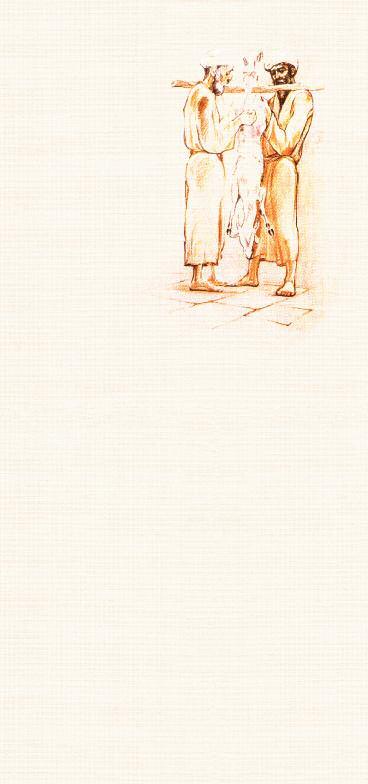
His head (knowledge) if he doesn’t understand things, his feet (desire) if he is willing to step on anything (people, principles, Torah) to get what he wants, and his stomach (satisfaction) his internal desire to fill his hunger at any cost. The lesson of the Korbon Pesach is that, even today, these three qualities must be brought as an offering to Hashem
Similarly, it says a person’s essence can be defined through three things: B’kiso, b’koso, u’v’kaaso (his wallet, his drink, and his anger) – how a person spends his money, how he behaves when he is drunk, and how he acts in anger These three things are actually the same as the three qualities mentioned above The wallet (which enables you to get what you want) = feet, drink = food, and head = anger
According to Chassidus, these names are interrelated Matzah represents bittul, selflessness This quality leads to true freedom, and allows for Pesach (literally, “a jump”), a radical leap forward in our Divine service
www Kosherspirit com 23 SOUL NUTRITION
,�שׁא̇ר וֹבּרקו ויערכּ
ְ ִ ְָ ָ There are three names for this holiday: THE THREE NAMES FOR THE YOM TOV The Feast of Matzos The season of our freedom Passover ונתורח ןמז חספ תוצמה גח
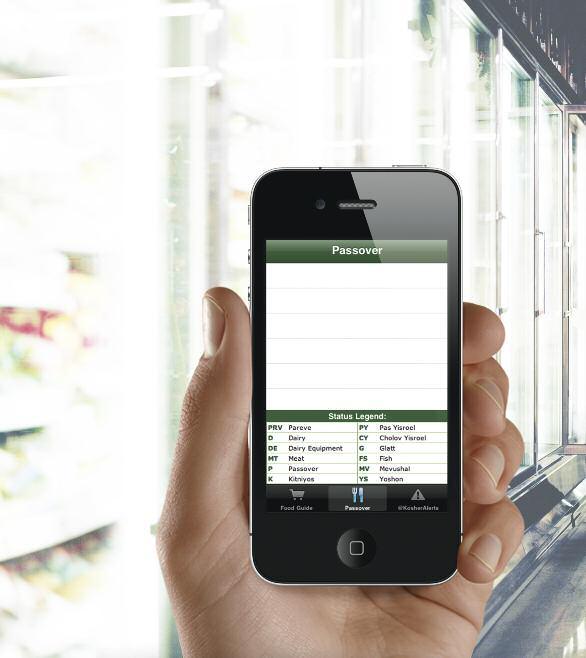

KOSHER CER TIFICATION ~ Kosher Spirit, 391 Troy Avenue • Brooklyn, NY 11213 718-756-7500 • info@ok org • www ok org follow us on Twitter @KosherAler ts For the latest in Kosher news: follow us on Facebook facebook.com/ok kosher Download the Kosher Food Guide app and get the most updated list of the Kosher for Passover products that ~ Kosher certifies. It’s like having a rabbi at your side whenever you go shopping... Is it Kosher for Pesach? 2 cutting-edge Kosher Apps now available as a free download on Google Play or the App Store Best wishes for a Kosher and Freilichen Pesach from ~ Kosher Certification DOWNLOAD THE FREE APP!



















































 Compiled by Dina Fraenkel
Compiled by Dina Fraenkel



